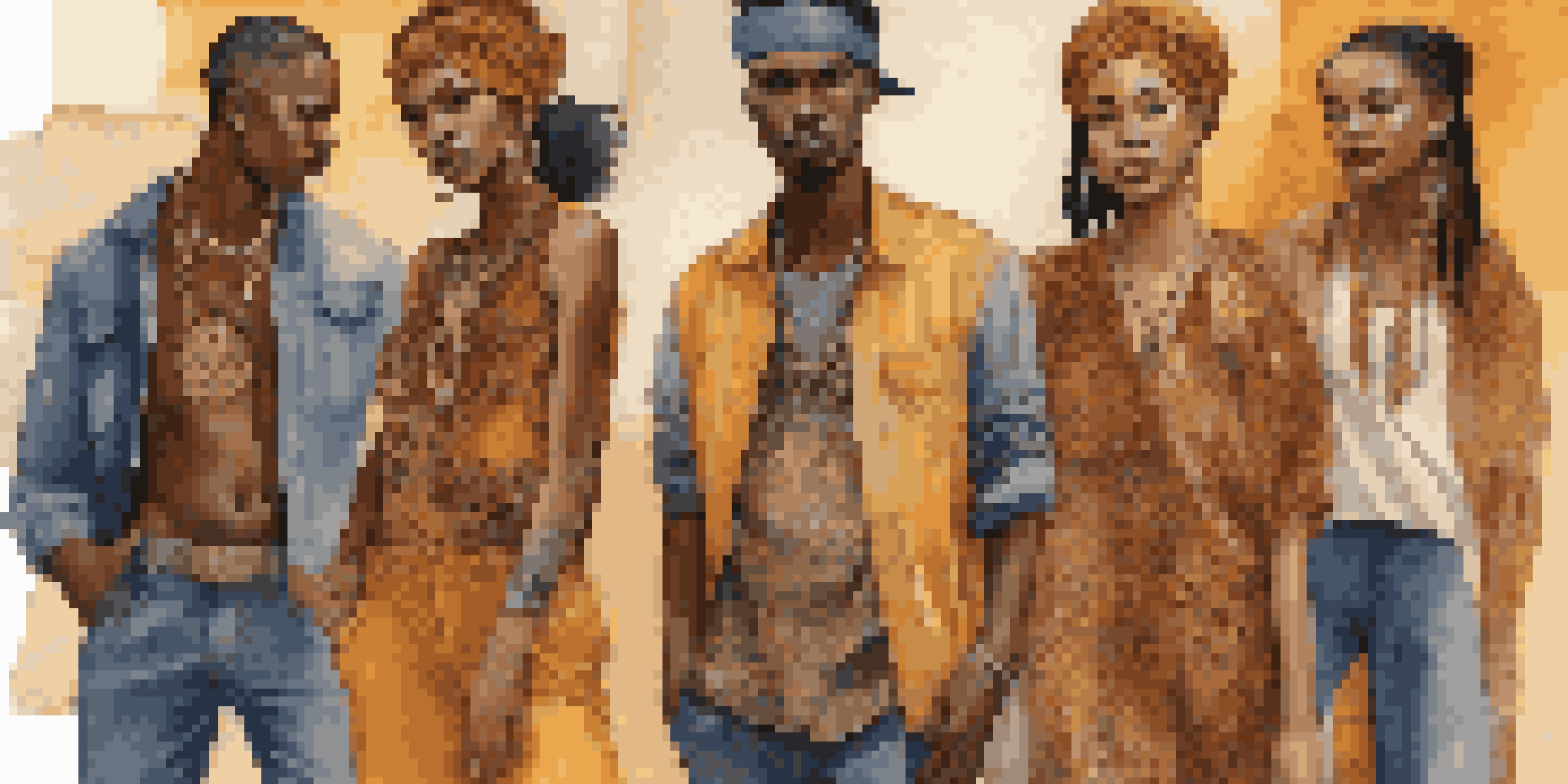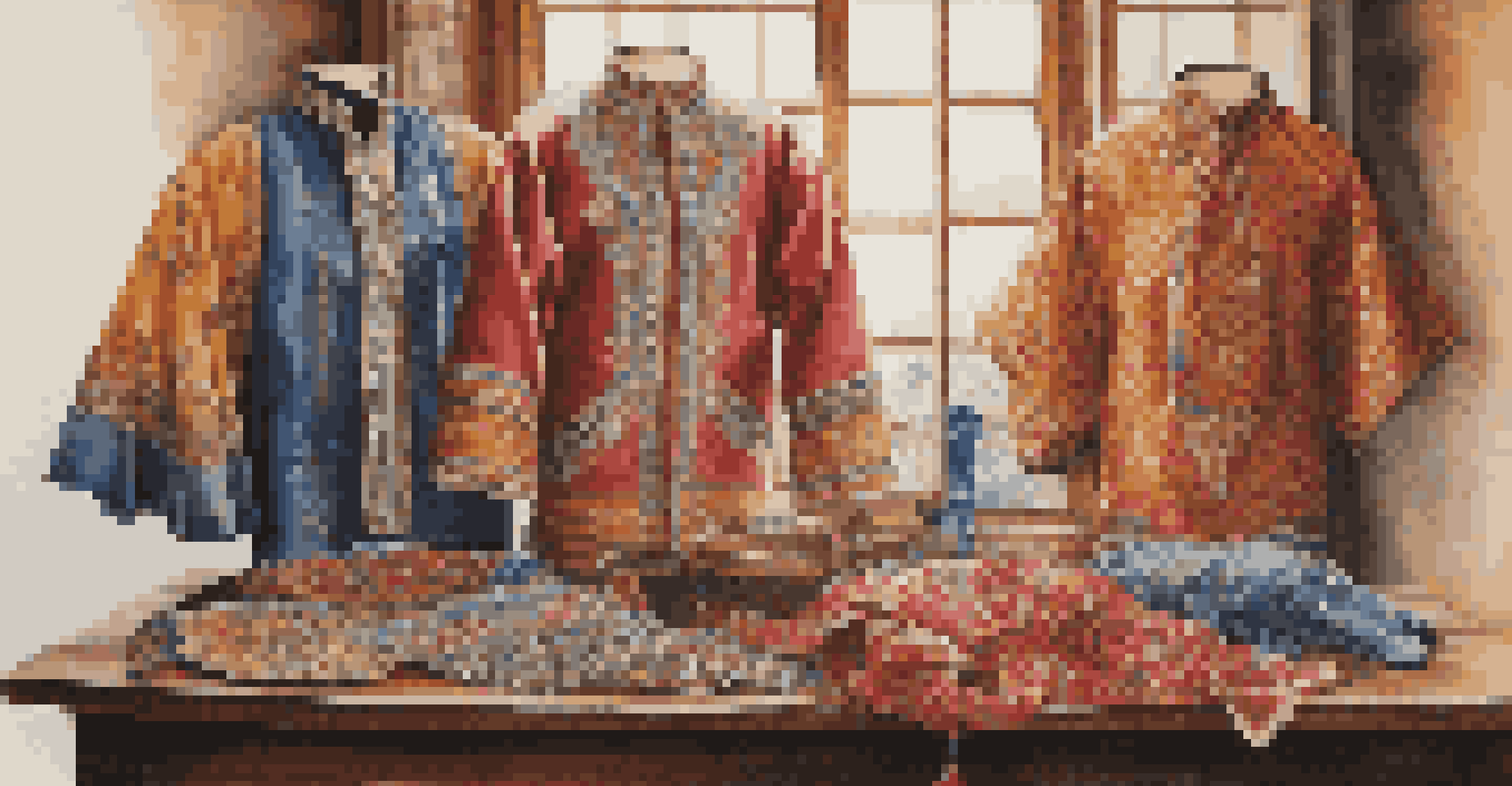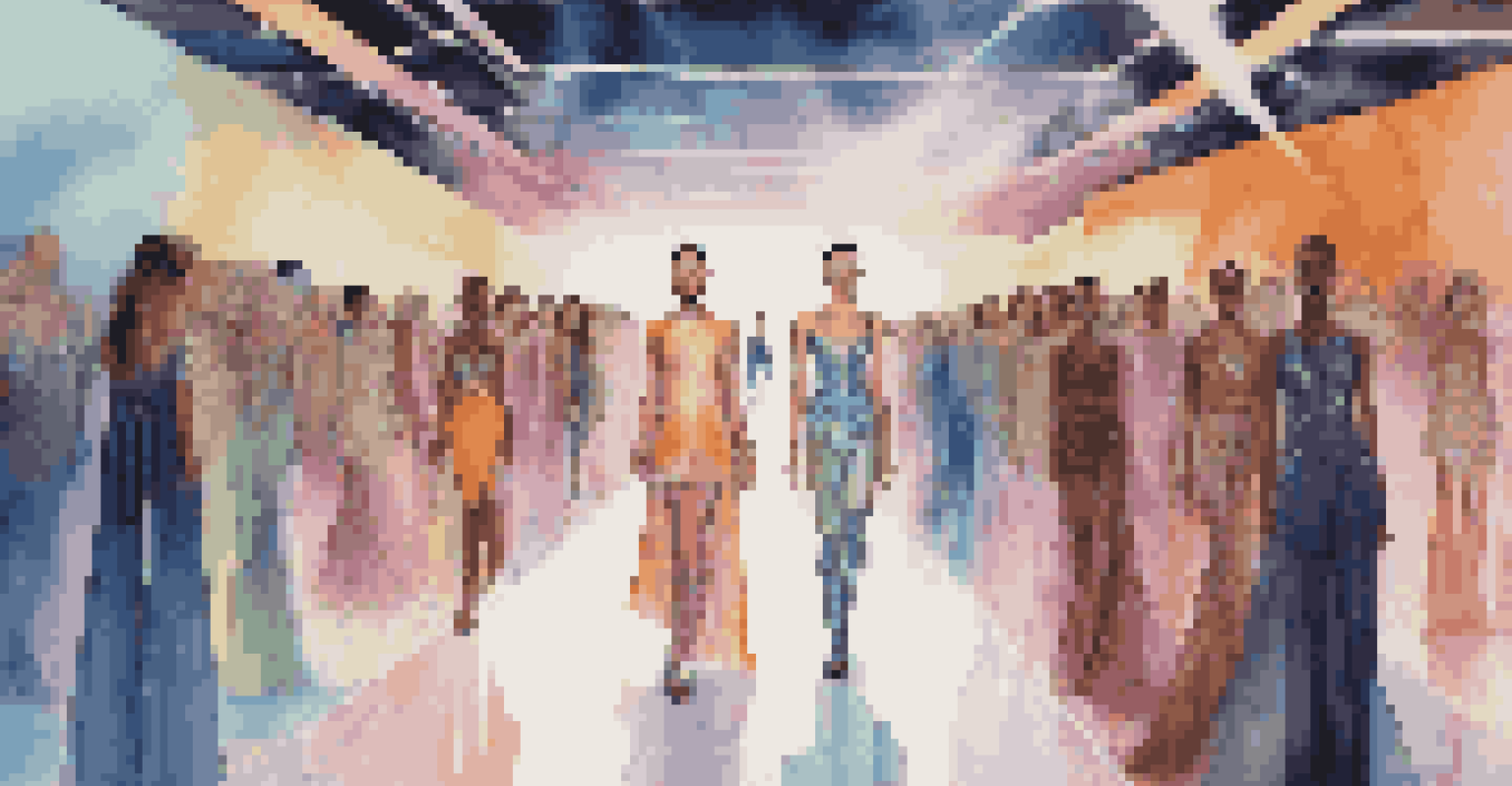The Influence of Fashion on Cultural Identity and Heritage

Fashion as a Reflection of Cultural Identity
Fashion often serves as a powerful mirror of cultural identity, embodying the values, beliefs, and traditions of a community. For example, traditional garments like the kimono in Japan or the sari in India are not just clothing; they are symbols of cultural heritage and pride. When people wear these items, they are making a statement about who they are and where they come from.
Fashion is the armor to survive the reality of everyday life.
Moreover, fashion choices can reflect one's social status, ethnic background, or even political stance. In this way, clothing becomes a canvas for personal storytelling, allowing individuals to express their unique identities. Think about how streetwear has roots in urban culture, representing resilience and creativity among marginalized groups.
Ultimately, fashion is more than mere fabric; it weaves together threads of history, culture, and identity. When we wear certain styles or patterns, we participate in a larger narrative, connecting ourselves to a rich tapestry of history and community.
How Fashion Preserves Cultural Heritage
Fashion plays a crucial role in preserving cultural heritage, acting as a vessel for traditions passed down through generations. Many cultures have specific attire that signifies important life events, such as weddings or festivals, which help keep customs alive. These garments often carry stories that are shared through their craftsmanship and design.

For instance, the intricate beadwork and patterns of Native American clothing tell stories of ancestry and tradition. By wearing these garments, individuals honor their heritage and ensure that their cultural narratives continue to thrive. This preservation is not just about aesthetics; it’s about maintaining a connection to the past.
Fashion Reflects Cultural Identity
Fashion serves as a powerful mirror of cultural identity, embodying the values, beliefs, and traditions of a community.
Additionally, fashion designers worldwide are increasingly drawing inspiration from indigenous practices and traditional techniques. This not only helps revive fading crafts but also educates broader audiences about the significance of these cultural elements, creating a bridge between generations.
The Role of Fashion in Cultural Exchange
Fashion acts as a dynamic platform for cultural exchange, blending influences from various backgrounds into unique styles. In our globalized world, it's common to see elements from different cultures coexisting in contemporary fashion. This blend creates a rich tapestry of creativity, as designers experiment with motifs and techniques from around the globe.
Style is a way to say who you are without having to speak.
An example of this can be seen in the popularity of African prints in Western fashion, where traditional patterns are reinterpreted in modern styles. This cross-pollination not only elevates the visibility of diverse cultures but also encourages appreciation and understanding among different communities.
However, it’s essential to approach this exchange respectfully and thoughtfully to avoid cultural appropriation. When done right, fashion can celebrate diversity while fostering connections between people from various backgrounds, enriching the fashion landscape.
Fashion and Its Impact on Social Movements
Fashion has long been intertwined with social movements, serving as both a tool for expression and a means of rallying support. Iconic clothing items, like the black turtleneck worn by civil rights activists or the pink hats from the Women’s March, have become symbols of resistance and solidarity. These garments tell powerful stories and unite individuals under a common cause.
Moreover, fashion can challenge societal norms and provoke discussions around critical issues such as gender equality and body positivity. The rise of brands promoting inclusivity and sustainability reflects a shift towards conscious consumerism, where people seek to align their clothing choices with their values.
Fashion Preserves Cultural Heritage
Through specific attire used in important life events, fashion helps maintain customs and connect individuals to their ancestry.
As fashion continues to evolve, its role in social movements will likely grow stronger, with new generations using style as a medium for change. This demonstrates that clothing can be more than just personal expression; it can also serve as a catalyst for societal transformation.
The Influence of Technology on Fashion and Culture
Technology has revolutionized the fashion industry and its relationship with cultural identity. The rise of social media platforms allows individuals from diverse backgrounds to showcase their unique styles, creating a democratization of fashion. This visibility helps to highlight cultural nuances that might otherwise go unnoticed in mainstream fashion.
Moreover, advancements in e-commerce and digital design enable designers to reach global audiences, sharing their cultural narratives far and wide. For instance, a small artisan from a remote village can now sell traditional garments online, preserving their craft while introducing it to new markets.
However, this technological shift also raises questions about authenticity and cultural representation. As fashion becomes increasingly digital, it is crucial to maintain a balance that honors cultural roots while embracing innovation.
The Future of Fashion and Cultural Identity
Looking ahead, the future of fashion will likely continue to intertwine with cultural identity in exciting ways. As society becomes more diverse and interconnected, we can expect a greater fusion of styles that reflect this rich tapestry of influences. Designers will have the opportunity to innovate while remaining grounded in their cultural narratives.
Additionally, there is a growing emphasis on ethical fashion that respects cultural heritage and promotes sustainability. Consumers are increasingly seeking brands that prioritize transparency and social responsibility, indicating a shift toward more mindful consumerism.
Fashion Fuels Social Movements
Fashion has become a tool for expression in social movements, using iconic garments to unite individuals under common causes.
Ultimately, the future of fashion will be shaped by the stories we choose to tell and the cultures we choose to celebrate. By embracing diversity and fostering collaboration, fashion can become a powerful tool for unity and understanding.
Conclusion: Embracing the Intersection of Fashion and Culture
In conclusion, the influence of fashion on cultural identity and heritage is profound and multifaceted. It serves as a reflection of who we are, a means of preserving our traditions, and a platform for dialogue and change. By understanding the intricate relationship between fashion and culture, we can appreciate the stories woven into the garments we wear.
As we navigate the ever-evolving fashion landscape, let’s embrace the beauty of cultural diversity and the richness it brings to our lives. From streetwear to haute couture, every piece of clothing has the potential to tell a story that connects us to our heritage and to one another.

Ultimately, fashion is not just about trends; it's about celebrating our identities and the cultures that shape us. By honoring these connections, we can create a more inclusive and vibrant fashion community.